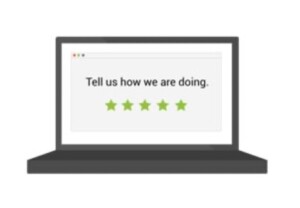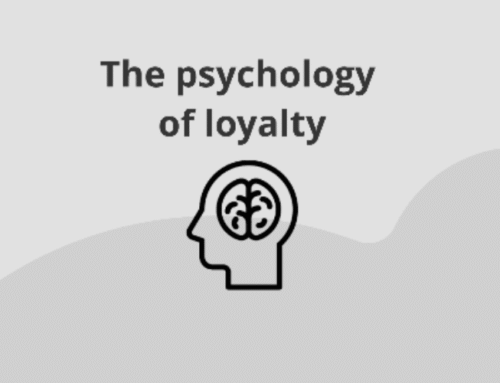Managing Your Reputation with Loyalty Programs
If there’s one thing we know, it’s that your company’s reputation and its ability to build long-lasting and profitable customer relationships are deeply intertwined. In fact, a recent survey by the American Marketing Association found that “64% of marketing executives indicated that they believe word of mouth is the most effective form of marketing.”
If you’ve been around a while, you may have also heard the-oft cited statistic that only one out of twenty-six customers who have a negative experience with your brand will ever even mention it. Instead, they will tend to say nothing and simply never show up again.
And while it’s an eye-opening number, it’s probably not for the reasons you think: Are you losing a potential customer? Yes, undoubtedly. More importantly, it highlights a glaring hole in the way we approach the management of our brand’s goodwill. And that is, not that we need to act more responsively to engage fans in moments of difficulty, but to continually nurture them to a point of advocacy.
“When customers share their story, they’re not just sharing pain points. They’re actually teaching you how to make your product, service, and business better. Your customer service organization should be designed to efficiently communicate those issues.”
– Kristin Smaby, “Being Human is Good Business”
Too often, we think of reputation management as being synonymous with crisis management. When in reality, it’s a two-way street. Take the vast majority of your customers – almost all of whom have had largely positive relationships with your brand. Here, the numbers are almost equally as abysmal, with only three out of ten customers writing an online review. Sure, they’ll give you a referral if asked specifically within the context of a conversation, but are they out there advocating for your business?
These are some of our most important brand advocates. They are the ones evangelizing our name and giving us the inside track to potential new customer’s purchasing choices that no amount of marketing or advertising could buy. And they are, at some level, infinitely more important than the often rare negative review that we receive.
Using Loyalty to Manage Your Reputation
When we look at our reputation, it’s hard not to wonder if, or how loyalty programs can be used, not only to manage negative customer experiences, but to amplify the positive ones. 97% of consumers in a recent survey said that they use online reviews when looking for a local service or product. This is a striking number and provides some insight into the raw data regarding the value of this work. Leveraging tools that help you engage customers post-sale, is vital to your long-term success.

To get you started on the right foot, here’s a quick guide for using your loyalty program to better manage your reputation and grow the bottom line:
Engagement is Key
Human beings are opinionated. Whether they’re vocal about that opinion can vary between personalities, but you can be sure that having someone walk away from an experience with your brand completely neutral is the exception, not the rule.
If you find someone who has expressed a negative opinion about your business online the nearly universal response is to write them off. When we encounter a positive opinion, we tend to say, “Thank You” and move on. When doing this, you leave a lot of money on the table.
Negative Reviews
We can’t state this loudly or boldly enough: One of the most important opportunities you have to improve your brand’s reputation is when a person expresses a negative opinion of it. Is there anything more powerful than hearing a friend or associate come full circle on a strong negative opinion? Then saying “This company screwed up, but did such an amazing job responding to it that I will willingly give them kudos”?
- One of the first steps in getting there is to let these frustrated customers know that their opinions are being heard with a well-thought-out response. Remember that the customer isn’t necessarily “always right”, but their perception of the services you provide is valuable.
- Next, try leveraging this person’s voice by adding them to a special segment within your loyalty program. Let them know that their opinion is valuable feedback and you’d be willing to extend them a larger ongoing promotion for helping make your product better on a continual basis. These customers are doing you a tremendous service by acting as bellwethers for the other nine out of ten people who won’t say anything at all. Make it worth their while.
- Create a customer alert at the register, so that your staff understands that this customer has had difficulties in the past and let them know what to be particularly attentive to.
Positive Reviews
Begin again, by thanking your customer for their feedback, but don’t stop there. Customer for whom you’ve provided an amazing experience are usually more than happy to help spread the word.
- Leverage those reviews as content on your website and loyalty program landing pages.
- In a recent “Consumer Review Survey” by Bright Local, 30% of customers name-brand engagement with reviewers is critical to their purchasing decision. Make sure that you engage them and thank them for their business.
Other potential customers will see this and know that you’re fully engaged and care deeply about your customer’s buying experience. - Encourage them to share their experience on other high-ranking review sites like Google, Facebook, Yelp, Trip Advisor, The Knot, or dozens of others.
Ask Questions
Never wait for reviews. Post-sale survey emails are a great way to solicit opinions about your products and services in an anonymous manner. They let the customer know that you care about their experience and are interested in hearing more from them about how you can improve it.
Often times a great reputation management strategy is built directly into your customer journey. Encourage customer feedback by embedding review site links to digital receipts, directly under your own. On your web store, prompt a review of the buying process before the customer has paid. If you’ve built gamification into your program, create a badge promoting online reviews.
Planning Ahead of Time
Don’t wait for the next negative review to come along before creating your reputation management strategy. Map out the entire buying process and create checkpoints within each customer’s journey in which you request feedback. This process will help you ensure that customers with negative experiences don’t make it all the way through your funnel without being intercepted and dealt with.
Employ reputation management and social listening software. A couple of free and inexpensive solutions include Google Alerts, HootSuite, Social Mention.
On the rare occasions when negative reviews do slip through, leverage the power of your loyalty program software to turn the tables on your customer’s experience.
- Instead of standard gift certificates, provide loyalty-enabled gift cards. These specially built gift cards give you the opportunity to follow up your outreach with exclusive high-value offers that generate investment in your brand.
- If the customer is already a member of your loyalty program, leverage your ability to apply instant rewards to their account. When used in combination with social listening tools you have the ability to intercept negative experiences, as they happen.
Award Evangelism
In a recent post entitled “How Much are Online Reviews Worth?” Rev Local says that hotels can charge up to 11% more for every additional star earned on review sites such as Yelp and Trip advisor. Following this finding through to its logical conclusion, it makes sense then that this is one of the most highly effective strategies in your toolkit for turning customer reviews into an increase in your bottom line.
- Segment customers who have given you high marks on survey emails and offer bonus points for sharing their experience online.
- Promote loyalty program tiers by offering short-term upgrades for each review left. This has the effect of growing awareness about preferred tiering, as well.
- Offer them additional loyalty program points for telling their friends about you on social media.
Optimize Your Shopping Experience for Feedback
The most important thing you can do to improve your brand’s reputation is simply to make it easier for customers to shop with and give feedback to your brand. Remember, the easier that it is to provide you with a review, the more likely consumers are to do it.
The more pleasant your shopping experience is – the more it delights the customer and the better your reviews. Today, a big part of optimizing the shopping experience is defined by how easily customers can access your brand through all of the platforms, channels, and devices where they now spend time. Make it easier for shopper to access your brand the better your reputation will get.
If you’re looking for help leveraging the power of your loyalty program to improve your brand’s reputation, let us know. bLoyal offers one of the most powerful customer retention platforms on the market and we’d be happy to help you devise your new strategy.




